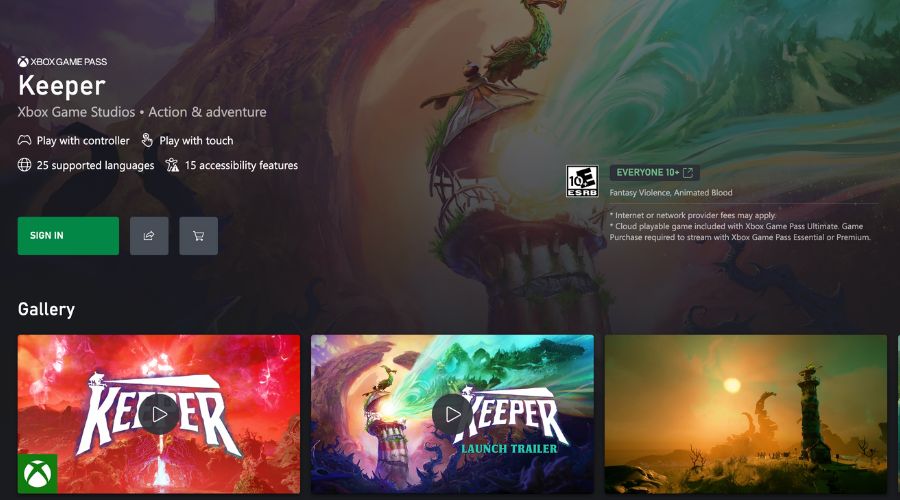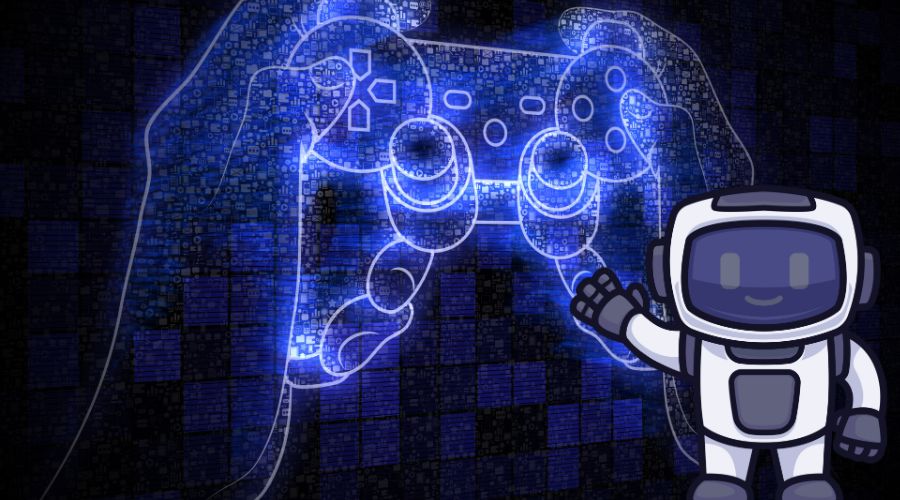The gaming industry is shifting in substantial ways. Not just incremental updates or minor spec bumps—we’re looking at changes that could reshape how games get made, distributed, and played. The global market is projected to hit around $522 billion by the end of 2025, with mobile gaming pulling more than half that revenue. The industry economics are reshaping in ways that weren’t predictable even two years ago.
Cloud Gaming Infrastructure Is Maturing
For years, cloud gaming felt like one of those technologies that was always “just around the corner.” But the infrastructure is catching up now. Services like NVIDIA GeForce Now, Xbox Cloud Gaming, and Amazon Luna are streaming graphically intensive titles to devices that couldn’t traditionally handle them. You can play AAA games on a phone or a budget laptop without the GPU to back it up locally.
Market projections suggest cloud gaming revenue could reach $10.5 billion in 2025 and potentially double by 2029. Some analysts project figures as high as $159 billion by 2032, though long-term projections should be viewed with appropriate caution.
What’s making this possible? Edge computing is processing data closer to users, reducing latency. 5G networks and Wi-Fi 7 are rolling out. Advanced compression codecs like AV1 and H.266 VVC are cutting bandwidth requirements significantly. The technological foundation is coming together.
Smaller services are emerging too. Moonlight PC lets you stream games from your gaming PC to other devices—no subscription, just your existing hardware. AirGPU offers hourly rental of high-performance rigs, essentially cloud PCs without the upfront investment. These niche options are filling gaps the major platforms haven’t addressed.
Challenges remain, however. Internet stability is more critical than ever. Latency is improving but still problematic for competitive gaming. Bandwidth caps exist in many regions. Rural areas often lack the necessary infrastructure. Cloud gaming isn’t a universal solution, but for certain use cases—particularly mobile-first markets or casual players seeking flexibility—it’s becoming increasingly viable.
Hardware could shift as a result. If the heavy lifting happens in data centers, local devices might focus more on ergonomics, display quality, and connectivity rather than raw processing power.
VR and AR: Approaching Mainstream Adoption
VR has been “about to go mainstream” for over a decade. But the technology is finally catching up to the promise, making mass adoption increasingly plausible.
Current headsets like Meta Quest 3 offer wireless experiences with inside-out tracking. Apple Vision Pro blends AR and VR with advanced eye tracking and spatial computing. Sony’s PlayStation VR2 provides 4K HDR displays, haptic feedback, and exclusive game libraries. The hardware is becoming lighter, more comfortable, and less reliant on external sensors or cables.
Frame rates are pushing past 180Hz, reducing motion sickness—a persistent barrier to adoption. Eye tracking and foveated rendering are improving performance by rendering detail only where users are actually looking. These incremental improvements are creating measurably better experiences.
AI is playing a significant role. VR environments can adapt in real-time based on player actions. NPCs interpret voice commands and gameplay decisions dynamically. Motion tracking for hands, body movement, and eyes is being refined through AI algorithms.
AR adoption beyond Pokémon GO has been limited, but companies like Niantic, Apple, and Microsoft are investing heavily in AR glasses that blend digital overlays with the real world. The potential applications—strategy games on your dining table, location-based experiences, practical overlays for everyday tasks—exist in theory, though successful execution remains to be proven.
One emerging trend: the lines between console, PC, and VR platforms are blurring. Hardware manufacturers are building more flexible devices—hybrid controllers, modular components, universal accessories that work across formats.
AI Integration Across Gaming
AI’s impact on gaming spans multiple areas with varying degrees of success.
Approximately one in three developers now use generative AI tools in their workflow. Applications range from procedural content generation—AI creating levels, landscapes, and challenges automatically—to art asset creation, dialogue generation, and QA testing where AI simulates player actions to identify bugs.
For NPCs, modern systems use large language models and reinforcement learning to create more dynamic behaviors. NPCs can adapt situationally, learn from player strategies, and engage in natural language dialogue. Some systems interpret player emotions and choices to create more responsive interactions.
Personalization is another application. AI monitors player activity and adjusts difficulty in real-time, creates unique story arcs based on choices, and provides tailored rewards matching player preferences. This enables games that adapt to individual skill levels and playstyles, though implementation quality varies significantly.
Graphics represent AI’s most visible impact. NVIDIA’s DLSS (Deep Learning Super Sampling) uses AI upscaling to make lower-resolution renders appear as native 4K without taxing hardware as heavily. DLSS 4 was announced at CES 2025. AMD’s competing FSR (FidelityFX Super Resolution) provides similar benefits. These technologies are becoming standard rather than premium features.
AI-powered ray tracing creates photorealistic lighting, shadows, and reflections. Performance gains are substantial—delivering better visuals without proportional hardware upgrades. This is particularly meaningful for players on mid-range systems.
Future developments include fully AI-generated worlds where environments, dialogues, and objectives are created dynamically, AI game assistants offering real-time hints tailored to individual players, and ultra-realistic NPCs that evolve over time based on interactions.
Next-Generation Console Hardware
Both Microsoft and Sony appear to be preparing next-generation hardware launches, potentially as early as late 2026 to 2027, though these timelines are subject to change.
The next Xbox, reportedly codenamed “Magnus,” may feature AMD Zen 6 CPU architecture and AMD RDNA 5 GPU with approximately 68 compute units—roughly equivalent to an NVIDIA RTX 5080. Target performance is native 4K at 120fps with improved ray tracing capabilities. It will use AMD FSR for upscaling rather than proprietary AI upscaling like PlayStation’s PSSR. Full backwards compatibility with Xbox Series X/S libraries is expected.
Microsoft’s strategy may prove more significant than the specifications. Reports suggest they’re developing OEM console-PC hybrids launching as early as 2026, potentially partnered with companies like Asus, Lenovo, or Razer. These devices would bridge console and PC gaming, possibly supporting side-loading of PC storefronts like Steam and Epic Games. This represents a significant departure from traditional console models.
PlayStation 6 specifications are less detailed. Expected specs include AMD Zen 6 cores and AMD RDNA 5 GPU with approximately 40-48 compute units. The design philosophy reportedly mirrors the PS4 approach—better capabilities than PS5 Pro but cost-optimized for mass adoption. AMD is allegedly pushing for shared architecture between Xbox and PlayStation to achieve economies of scale.
Sony may also be developing a handheld variant with reduced specs, offering approximately half the rasterization performance of PS5. The PS6 is positioned as a gaming-focused console with a strong first-party lineup, potentially launching in 2027.
Cost is a significant consideration. With advanced process nodes (TSMC 3nm or 2nm), AI cores, larger SSDs, and premium cooling, launch prices could exceed current generation pricing. PS5 Pro launched at $700; next-gen consoles might range from $600 to $800+ depending on configuration. This price barrier could limit adoption, especially if economic conditions remain uncertain.
GPU Technology: Competitive Landscape
NVIDIA remains the GPU market leader, though competition is intensifying.
NVIDIA’s roadmap through 2028 is ambitious. Blackwell Ultra (B300 Series) in 2025 promises 50% performance uplift with up to 288GB of HBM4E memory. Vera Rubin architecture in 2026, built on TSMC 3nm process, represents a significant advancement according to CEO Jensen Huang. By 2027, the VR300 NVL576 system could deliver 21X the performance of current GB200 systems. Feynman GPUs are planned for 2028.
These are primarily data center and AI-focused architectures, but gaming GPUs benefit from trickle-down technology.
AMD’s response centers on the Instinct MI450 series. Launching in 2026 with CDNA 5 architecture on TSMC 2nm process, it will compete directly with NVIDIA’s Hopper, Blackwell, and Rubin GPUs. The chiplet-based design provides advantages in memory capacity and bandwidth for inference workloads. AMD’s partnership with OpenAI involves deploying 6 gigawatts of MI450 GPUs starting in the second half of 2026, potentially generating over $100 billion in revenue across several years.
Intel is expanding into AI GPUs with Crescent Island GPU in the second half of 2026, featuring Xe3P microarchitecture optimized for performance-per-watt and 160GB LPDDR5X memory for inference workflows. It’s targeting a specific niche—”tokens-as-a-service” providers—rather than competing broadly.
For gaming, trends include AI-driven overclocking for automatic performance optimization and advanced cooling systems that adapt in real-time. Ray tracing is becoming a baseline expectation rather than a premium feature. AI upscaling through DLSS and FSR enables higher visual fidelity without proportional hardware costs—likely the most meaningful near-term improvement for most gamers.
PC Gaming Hardware: Steady Advancement
PC gaming hardware is advancing steadily across multiple fronts.
CPUs are embracing more cores. AMD’s Ryzen 7 9800X3D in 2025 features 8 cores and 16 threads with Zen 5 architecture and 3D V-cache, optimized for gamers who stream, record, and play simultaneously. Multitasking capability is the focus—handling demanding workflows without bottlenecking.
DDR5 RAM is becoming mainstream with faster speeds and lower prices. PCIe 5.0 SSDs are reducing load times significantly. HP OMEN systems now support up to 128GB DDR5-5600 RAM and 2TB PCIe Gen5 SSDs—specifications that were high-end recently are now standard in premium systems.
Cooling technology is advancing. HP’s OMEN Tempest Cooling features redesigned fans with additional heat pipes and fan blades, providing 1.49x increased airflow compared to previous generations. AI-powered optimization detects gameplay and adjusts settings automatically. Built-in fan cleaning eliminates manual maintenance. These are quality-of-life improvements that matter for sustained performance.
Peripherals are where competitive gaming directly influences hardware design. Ultra-responsive mice with polling rates beyond 8,000Hz, optical-mechanical keyboards combining speed with tactile feel, spatial audio headsets tuned for esports environments, and high refresh rate monitors pushing past 480Hz for professional setups represent the cutting edge. Much of this technology eventually filters down to consumer products.
Haptic feedback systems in controllers and peripherals are delivering richer tactile experiences. Wi-Fi 7 adoption is reducing latency in competitive scenarios. The advancement comes through incremental improvements across multiple areas rather than single breakthrough innovations.
An emerging trend: modular and customizable hardware that can be built, modified, and upgraded more easily. Swappable GPU docks, magnetic keyboard switches, user-upgradable VR headset modules, hot-swappable battery units in laptops, and 3D-printable case panels are becoming available. Some companies are exploring subscription-based modular upgrades—renting better GPU units or memory expansions. This concept addresses the rapid obsolescence problem that makes PC gaming expensive.
Mobile Gaming’s Market Dominance
Mobile gaming accounts for over 50% of the $522 billion global gaming market—a significant factor that’s easy to overlook in console or PC gaming discussions.
Mobile chipsets like Apple’s A17 Pro and Qualcomm’s Snapdragon G-series are enabling ray tracing, mesh shading, and dynamic performance scaling on phones. Console-quality graphics on mobile devices is no longer aspirational—it’s achievable on flagship devices.
Cross-platform progression where players seamlessly continue gameplay across mobile, console, and PC is increasingly standard. 5G optimization enables mobile games to leverage ultra-low latency for real-time multiplayer and AR experiences. The infrastructure is supporting increasingly demanding mobile gaming experiences.
Mobile gaming demographics differ from traditional gaming markets, with different expectations, monetization models, and engagement patterns. The industry is adapting to where the revenue is, which increasingly means mobile-first or mobile-inclusive development.

Cross-Platform Play as Standard
Cross-platform gaming has shifted from optional to expected functionality. Games like Fortnite, Call of Duty: Warzone, and Rocket League connect players across all platforms. Developers benefit from broader audiences and longer game lifespans. Players benefit from larger player pools and the ability to play with friends regardless of platform.
Challenges remain in balancing gameplay between different control schemes—controller versus mouse and keyboard. Competitive integrity becomes complicated when input methods provide different advantages. Some games address this through matchmaking or input-based lobbies.
The trend is clear—platform-exclusive multiplayer is becoming the exception rather than the rule. Publishers want maximum player bases, and platform distinctions matter less when everyone plays together.
Sustainability in Gaming Hardware
Environmental responsibility is shifting from corporate PR to competitive consideration in some markets. Energy-efficient components in consoles and PCs, recyclable materials, eco-friendly packaging, sustainable manufacturing practices, and carbon-neutral data centers for cloud gaming are becoming standard expectations.
Consumers in eco-conscious markets are actively choosing brands with visible environmental policies. This demographic is significant enough to influence market share in certain regions, and companies are responding accordingly.
Gaming’s carbon footprint is substantial—energy-intensive data centers, manufacturing processes, e-waste from hardware upgrades, and power consumption of gaming systems all contribute. Balancing innovation with sustainability commitments remains an ongoing challenge that the industry is beginning to address more seriously.

Future Developments: Likely Trends
Several trends appear likely to continue over the next few years:
Cloud gaming growth will continue, assuming infrastructure improvements persist. By 2030, for many gamers, internet connection may matter more than local hardware specifications. Devices could become more minimalist—focusing on ergonomics, display, and connectivity rather than internal processing power.
AI integration will become standard across hardware. Intelligent cooling systems, AI-enhanced resolution scaling, motherboards with onboard AI optimizing voltage and RAM allocation, and console AI profiles personalizing UI and adjusting difficulty will become commonplace.
VR/AR adoption may reach mainstream levels. 180Hz+ frame rates as standard, lighter wireless headsets, eye tracking and foveated rendering creating seamless experiences, and AR glasses potentially replacing headsets for casual use represent the trajectory. The technology is genuinely improved compared to previous generations.
Gaming hardware markets will evolve toward devices optimized for streaming rather than local processing, subscription-based upgrades instead of full system replacements, modular ecosystems allowing component-level upgrades, and sustainability-first design as consumer expectation. Whether these become dominant or remain niche depends on adoption rates.
Persistent Challenges
Latency in cloud gaming remains problematic for competitive play despite improvements. 5G/6G rollout, edge computing, AI-powered latency compensation, and regional data center expansion help, but physical limitations persist.
The digital divide continues to create barriers. Cloud gaming’s reliance on high-speed internet creates accessibility issues—bandwidth caps, rural and developing markets lacking infrastructure, and economic barriers to premium internet service all limit adoption. Technology doesn’t solve social and economic inequalities.
AI ethics in gaming raises concerns about creative authenticity, job displacement for artists and designers, bias in AI-trained systems, and intellectual property rights. The industry is moving forward with AI integration, but these ethical questions remain unresolved.
Environmental impact continues despite sustainability efforts. The industry must balance innovation with environmental commitments, and current trends favor innovation heavily.
The Current State of Gaming Technology
Gaming technology in 2025-2026 is in transition—cloud infrastructure improving but not perfected, AI integration expanding but raising questions, VR/AR finally viable but not yet ubiquitous, and next-gen hardware approaching but expensive.
The global gaming market’s projected $522 billion valuation represents not just entertainment but a technology testbed. Innovations in AI, cloud computing, graphics processing, and immersive experiences often emerge in gaming first before spreading to other industries. This pattern appears likely to continue.
For gamers, developers, and hardware manufacturers, the next few years represent a continuation of existing trends reaching maturity. The boundaries between console, PC, mobile, and cloud gaming are blurring. Accessibility is improving. Performance continues advancing. Costs remain a barrier for cutting-edge experiences.
The technology is advancing—what matters most is whether it’s advancing in directions that improve the gaming experience rather than just the specifications. Users will ultimately determine this through their choices and engagement with these new technologies.

